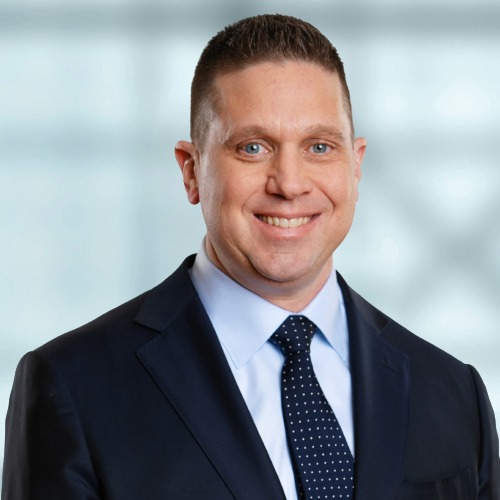Monthly features to profile the next generation of rehab researchers
When Institute Director Dr. Milos R. Popovic introduced the KITE Research Institute to the world two years ago, he had one goal – to redefine and broaden the rehab-specific perception of our work.
The I AM KITE campaign, launched in January, pays tribute to the diverse up-and-coming talent at KITE who are making a huge impact in the world of rehab science.
Today we introduce Susan Marzolini, a member of our Cardiorespiratory Fitness team. Her passion for understanding barriers to recovery for stroke survivors sets her up for success with helping them live healthier, more active lives post-stroke.
I AM SUSAN MARZOLINI
ABOUT SUSAN
Name: Susan Marzolini
Education: PhD in Medical Science and MSc in Exercise Science, University of Toronto; Registered Kinesiologist
KITE Team: Cardiorespiratory Fitness
Research Focus: Stroke recovery and rehab
PROFILE
Susan Marzolini is a Registered Kinesiologist with an MSc in Exercise Science and PhD in Medical Science from the University of Toronto. She completed her post-doctoral training at the University of Ottawa and is now a scientist at the KITE Research Institute. Susan is recognized as one of the top 10 productive authors globally and 3rd in Canada of cardiac rehabilitation and related research publications over the last 20 years determined by a bibliometric review (Frontiers in CV Medicine, 2021) and recognized as an Expertscape Expert in the top 1% of scholars who write about cardiac rehabilitation. Susan was among 24 people globally selected as Emerging Leaders in Stroke Prevention, Rehabilitation, and Treatment by the World Heart Federation in 2018. She has 91 publications in journals such as Stroke, Mayo Clinic Proceedings, Circulation Cardiovascular Quality and Outcomes, Journal of the American Heart Association, and Canadian Journal of Cardiology.
Susan researches and plans exercises to improve mobility and fitness and to restore brain function in patients after stroke. She applies the training principles used by athletes to design studies and programs for her patients. Currently, she is examining the effects of high-intensity-interval training versus conventional moderate-intensity aerobic exercise in people with mobility problems post-stroke.
She has received funding to examine how sex and gender affect patients’ access to exercise training programs. Her research is funded by the Heart and Stroke Foundation of Canada and the Canadian Partnership for Stroke Research.
Susan created the toolkit Stroke Online, launched on June 5, 2020, to improve access to exercise cardiac rehab programs. This was created to be accessible to everyone in low, middle and high-income countries as well as to address a lack of programming during the pandemic. It includes sections on aerobic and resistance training and risk factor modification education.
DEVELOPING EXERCISE CARDIAC REHAB PROGRAMS FOR STROKE SURVIVORS
In the future, Susan hopes her research will lead to more exercise training programs that are equally accessible for men and women. These changes to the healthcare delivery model will improve the outcomes of men and women post-stroke and reduce the burden and costs of stroke on the healthcare system.
If Susan’s research could change one thing in the world by tomorrow, it would be to determine how to best deliver and improve access to exercise programs for stroke survivors. Susan and Dr. Paul Oh developed a clinical exercise program for stroke survivors, Toronto Rehab’s Risk Factor Modification and Exercise Program for people following Stroke (TRI-REPS). TRI-REPS includes aerobic and resistance training; psychosocial and nutritional counseling; and promotes medication adherence, reduced sodium intake, glycaemic and blood pressure control, and smoking cessation. However, not enough programs like this exist. Susan’s research shows exercise programming is extremely important as it helps both men and women improve fitness, mobility, cognition, muscle mass, strength, and quality of life post-stroke.
WHY KITE?
“Being part of the KITE research community has allowed me to combine my research and clinical work,” Susan says about why she was drawn to KITE. It has also given her “the opportunity to collaborate with other researchers from different disciplines to help accomplish these goals.”
Susan’s research “is inspired by watching people regain lost mobility and taking back control of their lives,” she says. Her job allows her to help people live fulfilling lives post-stroke, and she is happy to have “guided the training of patients who have returned to work, climbed Mt. Kilimanjaro, cycled 50 km to raise funds for charity, and had many other accomplishments.”
SUSAN AND I AM KITE
The I AM KITE video “makes me proud to be part of a world-leading organization in rehabilitation research that is dedicated to improving the lives of people through, Knowledge, Innovation, Talent, Everywhere – KITE,” Susan says. “It gives me hope that the work we are doing is helping the people that most need it while finding ways to keep people safe as they age.”
Susan is an avid cyclist who bikes to work everyday in all weather conditions. She loves it so much that most of her vacations also include cycling, including her last big trip where she biked from Nicaragua to Panama. Her last “local” ride was cycling from her home in downtown Toronto to Montreal. She also loves canoeing and has canoed through Florida’s Everglades National Park and spent two weeks canoeing down the Zambezi River in Africa.




